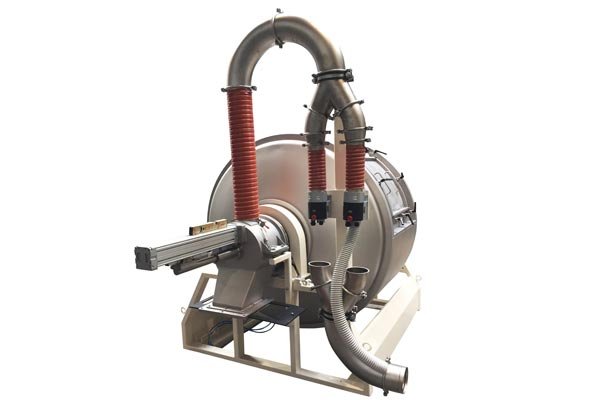Lindor shares a story of a customer, a German trader and processor of Fair Trade exotic fruit, that wanted to increase its efficiency. Lindor’s answer to this is a machine that can do many of the fruit processing steps –mixing, coating, drying, to roasting on a 4x4 meter surface. The machine was developed over time.
“The company needed a more efficient way to produce the sweetened fruit flakes," explains Michael Kaiser, Lindor's Sales Manager Germany. “The caramelised flakes proved to be a popular product, but the caramelisation process was very labour-intensive and time-consuming.
From mixer to versatile processing machine
"During the decades that we have been producing mixers, we have noticed that our mixers are a great platform for doing more than simply mixing. Before long, a customer asked us whether it would be possible to spray liquid onto the product during the mixing process. And, some time later, another customer asked if we could dry the contents," Kaiser continues. "Over time, what began life as a mixer, had crystallized into a versatile processing machine.”
Lindor used this experience to produce a mixer for this new customer that mixes the larger and smaller flakes in a short period of time. A special nozzle at the inlet then sprays a sugar solution over the flakes. Because the mixer continues to rotate, the flakes are sprayed from all sides, giving them a perfect coating.
Roasting After applying the coating, warm recycled air is blown into the mixer. The air blows against the flow of the product to maximize the heat transfer. The moisture released during the drying cycle, escapes via the vent on the inlet side. Once the moisture has been expelled, the air temperature is raised and the flakes are roasted, resulting in the desired golden brown caramel layer.

On a 4x4 meter surface, manufacturers of processed fruit can mix, coat, dry and roast, and caramerilize fruit.
Turnkey machine
Usually, Lindor mixers are part of a processing line, but in this case this one machine covers the entire process. Operators empty bags of flakes into the mixer. The mixer then completes the program, and, an hour later, these amazing caramelized flakes flow out.
"In the past, you not only needed a mixer to do this, but also a conveyor belt with spray tunnel, and finally an oven to complete the process. So now the customer is saving a lot of money, space, and time, and is able to achieve a better end result," says Kaiser. “In addition, there are various transitions you are eliminating, thereby avoiding such negative effects as product loss, contamination and additional work.”
Simple and efficient
The final process is simple and efficient. "Over the years, we have become strong in achieving this, by engaging with the customer to arrive at the best solution in a simple and logical way", says Kaiser. This requires expertise and a good cooperation with the customer. "We have carried out numerous experiments with a smaller lab mixer to find the ideal product. This requires an awful lot of fine-tuning.
An infinite number of settings
Kaiser gives some examples of the processing parameters: "How fast should the speed of the mixer be during homogenization? And during the coating process? Or while drying and roasting? And how long should the roasting process last? You don't want sticky or burned flakes. At what speed should the sugar water be sprayed? And which sprayer should be used? At what speed do you feed the warm air through the drum? You don't want the product to be blown away.”
Dozens of these parameters have been precisely specified. The customer visited Lindor several times so that we could experiment together in a laboratory environment. The results from the lab mixers are scalable to the larger mixers. "The interaction with the customer is very important. They have most knowledge of their product and the process, and we have the expertise regarding our machines and the associated processes. Together, we can arrive at the best solution", says Kaiser.
Even after hours of being processed, the flakes remain intact
The most challenging aspect of this project, according to Kaiser, was the delicacy of the flakes and the time needed to roast them properly. “A batch is in the drum for over an hour. Of course, you don't want it to emerge as powder. The tests immediately showed that the flakes, even after a long run, all came out intact. That demonstrates, once again, how gentle our mixer is.
NIKE SB














